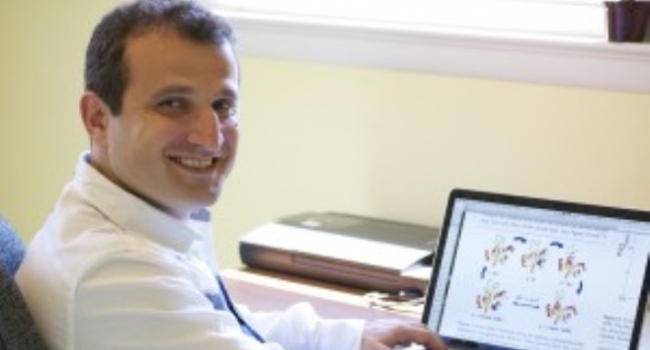- Latest news▼
-
12:16, April 19 Scientists grow human mini-lungs in lab

-
10:23, April 19 JAMA Oncology: Urine test can help rule out high-grade prostate cancer with almost 100% accuracy, study shows

-
18:00, April 18 Daily Mail: Elderly woman in China gets infected with brain-eating amoeba

-
14:19, April 18 Obesity: exercising before breakfast helps you lose weight faster

-
10:42, April 18 The Conversation: childhood trauma can cause pathological hoarding

-
08:37, April 18 Daily Mail: Satiating food reduces cravings for sweets, nutritionist says

-
18:22, April 17 First Armenian-German Conference entitled “Heart Failure Spring School”

-
08:38, April 17 Why do kids usually recover from COVID-19 more easily than adults?

-
14:37, April 16 Daily Mail: intermittent fasting is not suitable for children and women before their periods

-
16:41, April 15 Cell: in carriers of defective BRCA2 gene, sugar consumption increases cancer risk

-
15:04, April 15 305 cases of measles recorded in Armenia so far in 2024

-
14:38, April 15 Food and Environmental Virology: tea contributes to effective coronavirus control

-
12:41, April 15 Daily Mail: vitamin A, B3 and E supplements can be dangerous

-
10:56, April 15 Diabetes Care: evening physical activity is good for the heart

-
08:27, April 15 Women are more susceptible to blood loss and death during bypass surgery than men, researchers say

All materials
Computational modeling by Garegin Papoian from Maryland helps spot cancer genesis in molecules

Computational model by Dr. Garegin Papoian from Maryland University is being used to spot cancer genesis in molecules.
Dr. Garegin Papoian, who leads the physical chemistry group in the Department of Chemistry and Biochemistry at the University of Maryland, developed computational modeling of how proteins and DNA interact within cells.
“Many of these structures are shared between organisms and have a billion years’ evolutionary history. To put it simple, lots of ideas that you can learn from a mouse, you can directly translate to humans and vice versa”, the scientist said.
“When you want to make a car, first thing you do is design it on a computer. You even run it on a computer, and then when you see that everything is ok, you go on to make a prototype. We’re not there yet in biology, but that’s the vision for years to come for biology and medicine”.
Dr. Papoian’s recent works include studies with Dr. Yamini Dalal at the National Institute of Health in Bethesda, Maryland. Her group researches how DNA is packed in cells, and how particles called histones and nucleosomes modify the DNA in numerous ways. If they go into a wrong place in the DNA they may lead to cancer, But as yet, these processes are not visible under current microscopes’ resolution. Computational modeling helps to see this in 3D.
“Almost all of computing predictions proved out to be correct in the lab. This increases our credit to our model”, Papoian added.
Follow NEWS.am Medicine on Facebook and Twitter
- Video
- Event calendar
- Archive
- Most read
month
week
day
- WHO: Nigeria pioneers revolutionary meningitis vaccine 1190
- One-third of women experience menstruation-related migraines, most often during premenopause - study 1188
- Daily Mail: vitamin A, B3 and E supplements can be dangerous 1087
- Food and Environmental Virology: tea contributes to effective coronavirus control 1079
- Cell: in carriers of defective BRCA2 gene, sugar consumption increases cancer risk 1050
- 305 cases of measles recorded in Armenia so far in 2024 1044
- Women are more susceptible to blood loss and death during bypass surgery than men, researchers say 974
- Diabetes Care: evening physical activity is good for the heart 929
- Daily Mail: intermittent fasting is not suitable for children and women before their periods 874
- First Armenian-German Conference entitled “Heart Failure Spring School” 643
- Obesity: exercising before breakfast helps you lose weight faster 543
- Why do kids usually recover from COVID-19 more easily than adults? 542
- The Conversation: childhood trauma can cause pathological hoarding 540
- Daily Mail: Elderly woman in China gets infected with brain-eating amoeba 533
- Daily Mail: Satiating food reduces cravings for sweets, nutritionist says 506
- Find us on Facebook
- Poll





